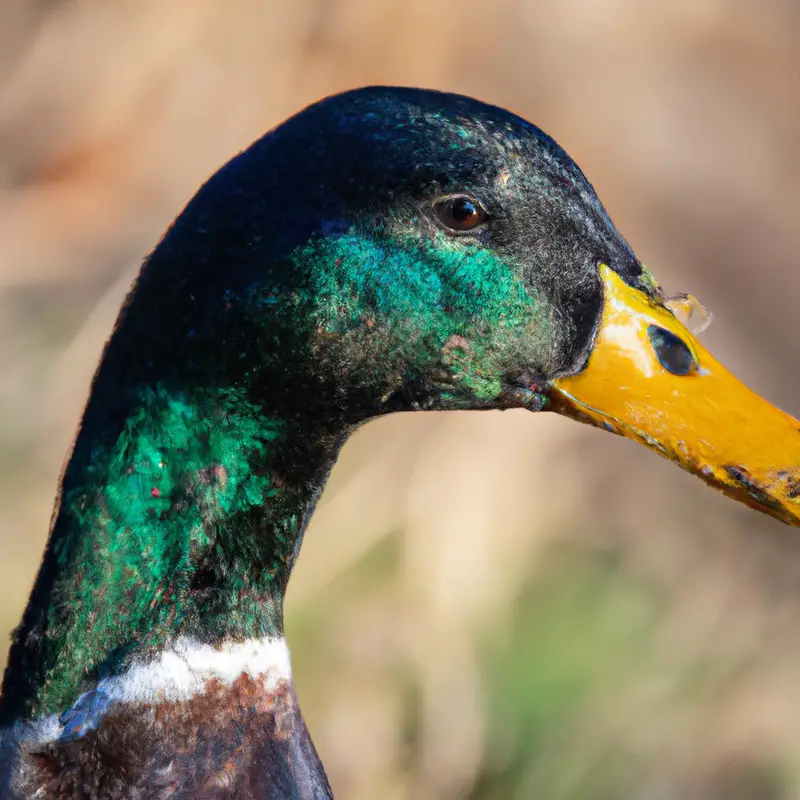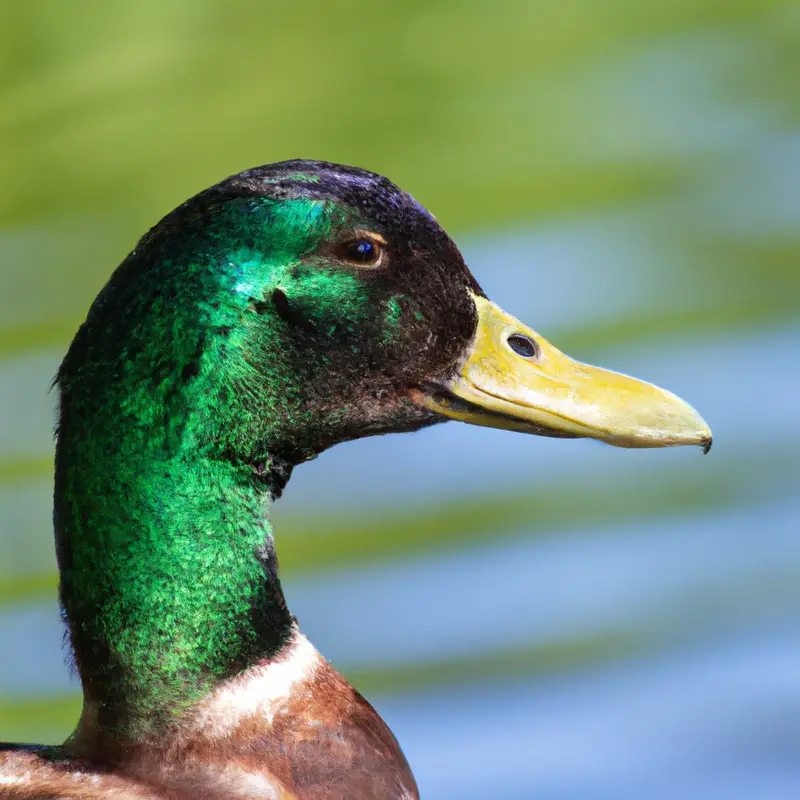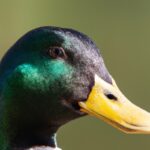Key Takeaways:
- Mallard populations in Delaware are stable, allowing for sustainable hunting opportunities.
- Proper licensing and compliance with state regulations are necessary for hunting mallard in Delaware.
- Hunters must possess the necessary skills and equipment to effectively pursue mallard in diverse habitats.
- Conservation efforts and habitat management are crucial for maintaining healthy mallard populations in Delaware.
Are you ready to experience the thrill of hunting mallard in Delaware? As an expert in waterfowl hunting, I’m here to share my knowledge and help you make the most of your hunting adventure.
In this article, we’ll dive into the regulations, best locations, essential gear, strategies, safety considerations, and frequently asked questions surrounding mallard hunting in Delaware.
Whether you’re a seasoned hunter or just starting out, you’ll find valuable tips and insights to enhance your skills and increase your chances of success. So grab your gear, let’s head to the marshes of Delaware and embark on an unforgettable mallard hunting journey!
Aspect | Mallard Hunting in Delaware |
Location | Delaware, United States |
Season | October-January |
Licensing | Valid Delaware Hunting License and Delaware Waterfowl Stamp |
Bag Limit | 6 ducks per day (including no more than 4 mallards, of which only 2 can be hens) |
Hunting Methods | Decoying, Jump Shooting, Blinds, and Pass Shooting |
Regulations | Follow Delaware Division of Fish and Wildlife regulations for waterfowl hunting, including required hunter education and hunter orange clothing |
Equipment | Shotgun, Non-toxic Shot, Camouflage Clothing, Duck Calls, Decoys |
Hunting Hours | One-half hour before sunrise to sunset |
Mallard Hunting Regulations in Delaware
Hunting Season dates for Mallards in Delaware
The hunting season for Mallards in Delaware typically runs from early November to late January.
The exact dates may vary slightly each year, so it’s important to check the latest hunting regulations to ensure you’re hunting within the legal timeframe.
During this season, hunters can enjoy the opportunity to pursue Mallards and participate in the hunting tradition in Delaware.
It’s essential to follow all state rules and regulations, including bag limits and hunting methods, to ensure the sustainability of the Mallard population and protect the environment.
Happy hunting!
Bag Limits and Possession Limits for Mallards in Delaware
The bag and possession limits for Mallards in Delaware are set by the state’s Department of Natural Resources and Environmental Control (DNREC).
For hunters, the bag limit for Mallards is two birds per day during the regular season and the youth/universal hunting days.
This means that you can legally harvest and keep up to two Mallards in a single day.
As for possession limits, you are allowed to possess no more than six Mallards at any given time, whether they are fresh, frozen, or processed.
This limit will reflect the total number of Mallards you have in your possession, including any birds that have been gifted to you or are part of your personal collection.
It’s important to note that bag and possession limits can change from year to year, so it’s crucial to stay up to date with the latest regulations.
This will help ensure you stay within the law while enjoying your Mallard hunting experience in Delaware.

Required Hunting Licenses and Permits in Delaware
To hunt mallards in Delaware, you will need a few important licenses and permits.
First, you must have a Delaware hunting license, which is required for all hunters in the state.
Additionally, if you are 16 years or older, you will need a Delaware waterfowl stamp.
This stamp is specific to waterfowl hunting and is necessary for harvesting mallards.
Finally, if you plan to hunt on federal waterfowl production areas, you will need a Federal Duck Stamp as well.
Make sure you have all the necessary licenses and permits before heading out on your mallard hunting adventure in Delaware!
Best Places for Mallard Hunting in Delaware
Overview of Prime Mallard Hunting Locations in Delaware
Delaware is a prime destination for mallard hunting. The state offers an abundance of prime locations that provide excellent opportunities for hunters.
Some of the top spots include Prime Hook National Wildlife Refuge, Bombay Hook National Wildlife Refuge, and Cedar Swamp Wildlife Management Area.
These areas are known for their diverse habitats, including wetlands and marshes, which attract large numbers of mallards during the hunting season. It’s important to note that licenses and permits are required, and hunters should be aware of any specific regulations before heading out to these locations.
Happy hunting!
Tips for Finding Mallard Roosting and Feeding Areas
Finding mallard roosting and feeding areas can greatly enhance your chances of successful hunting.
Here are some tips to help you locate these prime spots:
- Scout early mornings and evenings: Mallards are most active during these times, so make sure to be out in the field when they are. Listen for their distinct quacks and keep an eye out for their flight patterns.
- Look for bodies of water: Mallards prefer to roost and feed near water sources like ponds, lakes, rivers, and marshes. Search for areas with plenty of vegetation and open water where they can find food and rest.
- Pay attention to food sources: Mallards primarily feed on aquatic plants, seeds, grain, and insects. Look for areas with abundant food sources nearby, such as flooded fields, crop fields, or wetlands with ample vegetation.
- Study weather patterns: Mallards are influenced by weather patterns, especially during migration. They tend to seek sheltered areas during storms or windy conditions, so focus your search on sheltered spots like coves, sloughs, or shelterbelts.
- Use decoys strategically: Placing decoys near potential roosting or feeding areas can attract mallards. Set up decoys in a realistic manner and vary their positions to create a natural-looking scene that entices ducks to investigate.
Remember, patience is key.
Mallards can be elusive, so don’t get discouraged if you don’t find them right away.
By carefully observing their behavior and habitat preferences, you’ll increase your chances of locating their roosting and feeding areas.
Happy hunting!

Public Hunting Lands for Mallard Hunting in Delaware
If you’re looking for public hunting lands in Delaware to go mallard hunting, here are a few options for you:
- Prime Hook National Wildlife Refuge: This refuge provides excellent opportunities for waterfowl hunting, including mallards. It has designated hunting areas and permits are required.
- Little Creek Wildlife Area: This wildlife area offers diverse hunting opportunities, including waterfowl hunting. It has impoundments and marshes that attract mallards.
- Woodland Beach Wildlife Area: A popular spot for duck hunting, Woodland Beach Wildlife Area provides access to marshes and tidal flats where mallards can be found.
- Augustine Wildlife Area: This area is known for its wetlands and tidal marshes, making it a suitable location for mallard hunting.
Remember to always check the regulations and obtain the necessary hunting permits.
Good luck out there!
Essential Gear and Equipment for Mallard Hunting in Delaware
Firearms and Ammunition for Mallard Hunting in Delaware
To hunt mallards in Delaware, you’ll need a reliable firearm and appropriate ammunition.
A 12-gauge shotgun is the most common choice, but 20-gauge and 10-gauge shotguns can also work.
Opt for a shotgun with a 26 to 30-inch barrel for better accuracy.
As for ammunition, use steel shot with sizes ranging from #2 to #4.
This ensures the shells adhere to Delaware’s regulations, which prohibit the use of lead shot for waterfowl hunting.
Remember to always follow firearm safety guidelines and check local regulations before hunting.

Decoys and Decoy Spreads for Mallard Hunting in Delaware
When it comes to mallard hunting in Delaware, using decoys and setting up decoy spreads is essential. Decoys mimic the appearance of mallards and attract the ducks to your hunting area.
A diverse spread of decoys is recommended to make it look more realistic.
Consider using different poses, species, and sizes to create an authentic setting. Experiment with different spread patterns, such as a tight group or a scattered formation, to find what works best for attracting mallards in Delaware.
Remember to adjust your decoy spread based on wind direction and hunting conditions.
Hunting Blinds and Camouflage Gear for Mallard Hunting in Delaware
When heading out for mallard hunting in Delaware, having the right hunting blinds and camouflage gear is essential.
Hunting blinds provide you with concealment and a comfortable shooting position.
Look for blinds that are waterproof and blend well with the surrounding environment.
Camouflage gear, including clothing and face masks, should match the wetland surroundings to help you remain undetected by the ducks.
Additionally, using decoys and calling techniques can enhance your chances of a successful hunt.
Happy hunting!
Strategies and Techniques for Mallard Hunting in Delaware
Understanding Mallard Behavior and Calling Techniques
Understanding Mallard Behavior and Calling Techniques: To be successful in hunting mallards, it’s important to understand their behavior and use effective calling techniques.
Mallards are social birds and tend to flock together.
They also respond to the calls of other ducks.
When hunting, try to mimic the sounds of a mallard hen to attract them.
Vary your calling by adding feeding or comeback calls to make it more realistic.
Practice different calling sequences to increase your chances of success.
Decoy Placement and Motion for Mallard Hunting in Delaware
For successful mallard hunting in Delaware, proper decoy placement and motion are key. Place your decoys in small groups, mimicking how mallards naturally gather.
Give them some space to create a realistic spread.
Vary the distances between the decoys to create a natural appearance. Use motion decoys, such as spinning wing decoys or jerk strings, to add movement and attract mallards.
Experiment with different patterns and configurations until you find what works best.
Keep adjusting your decoy spread throughout the hunting session to maintain realism and attract more mallards.
Tips for Concealment and Stealth in Mallard Hunting
When hunting mallards, concealment and stealth are key for a successful hunt.
Here are some tips to help you stay hidden and approach the ducks without alerting them:
- Choose the right location: Look for areas with natural cover, such as tall grass, brush, or reeds. Position yourself where you blend in with your surroundings.
- Use camouflage: Dress in clothing that matches the environment and use camo gear, including face masks, gloves, and hats. Camo helps break up your outline and makes you less visible to the ducks.
- Set up your decoys strategically: Place the decoys in a pattern that mimics a real flock of ducks, but leave enough space for you to hide behind them. This will provide additional cover and make it harder for the ducks to detect your presence.
- Stay still and quiet: Once you’re in position, minimize any unnecessary movement or noise. Ducks have keen eyesight and hearing, so any sudden movements or loud sounds can alert them to your presence.
- Use natural cover: If possible, position yourself near natural cover like trees or bushes. This will provide additional concealment and make it easier to blend in.
Mallard Hunting Tips and Safety Considerations in Delaware
Safety Rules and Regulations for Mallard Hunting in Delaware
Before heading out on your next mallard hunting trip in Delaware, it’s important to be aware of the safety rules and regulations.
Here are a few key guidelines to keep in mind:
- Hunter Education: Complete a hunter education course as it is mandatory for anyone born after January 1, 1967, to possess a valid hunter education certification.
- Licensing: Obtain the necessary licenses and permits, including a valid Delaware hunting license and a federal duck stamp.
- Legal Hunting Hours: Mallard hunting is only allowed during specific times, typically from a half-hour before sunrise until sunset. Make sure to check the updated hunting hours for each season.
- Bag Limits: Familiarize yourself with the bag limits set by the Delaware Division of Fish and Wildlife. Respect these limits to ensure the conservation of mallard populations.
- Firearms Safety: Handle firearms safely and responsibly. Always keep the muzzle pointed in a safe direction and your finger off the trigger until ready to shoot.
- Water Safety: If hunting from a boat, make sure everyone onboard wears a personal flotation device (PFD. Be aware of local water conditions and navigational hazards.
- Hunting Zones: Only hunt within designated hunting zones and follow any additional rules specific to that area.
- Respect for Others: Be considerate of other hunters and recreational users of the land. Avoid confrontations and respect their space.
By adhering to these safety rules and regulations, you can ensure a safe and enjoyable mallard hunting experience in Delaware.
Happy hunting!
Tips for Ethical Hunting Practices in Mallard Hunting
When hunting mallards, it is important to practice ethical hunting practices to ensure the conservation and well-being of the species.
Here are some tips to help you do so:
- Know and follow hunting regulations: Familiarize yourself with Delaware’s hunting regulations and abide by them. This includes understanding bag limits, hunting seasons, and any specific restrictions or guidelines for mallard hunting.
- Practice responsible shot placement: Take careful aim to ensure a clean and humane kill. This means targeting vital areas of the bird, such as the head or chest, to minimize suffering and ensure a quick demise.
- Respect shooting distances and safe shooting angles: Maintain a safe shooting distance from other hunters and avoid shooting when birds are at a low altitude or in tight groups. This helps prevent accidental injuries or fatalities.
- Leave no trace: Clean up after yourself and dispose of any trash or items properly. It is essential to respect the environment and leave the hunting area as you found it.
- Seek permission and boundaries: If hunting on private land, obtain permission from the landowner and adhere to any designated boundaries. Respect neighboring properties and avoid encroaching on other hunters’ spaces.
- Practice firearm safety: Handle firearms responsibly and always follow firearm safety rules. Keep the muzzle pointed in a safe direction, treat every firearm as if it is loaded, and keep your finger off the trigger until ready to shoot.
Weather and Environmental Factors to Consider in Mallard Hunting
When planning a mallard hunting trip, there are a few important weather and environmental factors to consider.
Firstly, pay attention to the wind direction as mallards prefer flying into the wind when approaching a decoy spread.
Secondly, keep an eye on the temperature as colder weather can bring more mallards into your hunting area.
Additionally, consider the habitat conditions, such as flooded cornfields or marshes, as mallards are more likely to be present in areas with suitable food and cover.
Lastly, avoid hunting during extreme weather conditions, as this could impact both your safety and the success of your hunt.
Frequently Asked Questions about Mallard Hunting in Delaware
Can non-residents hunt mallards in Delaware?
Yes, non-residents can hunt mallards in Delaware. As long as you have the required hunting license and any necessary permits, you are eligible to hunt mallards in Delaware, regardless of your residency status.
Make sure to familiarize yourself with Delaware’s hunting regulations, such as bag limits and hunting seasons, to ensure you are in compliance.
Happy hunting!
What are the legal shooting hours for mallard hunting in Delaware?
The legal shooting hours for mallard hunting in Delaware are from one-half hour before sunrise to sunset. During this time, you are allowed to hunt mallards as long as you have the appropriate hunting licenses and follow all other state and federal regulations.
It’s important to check the official regulations and stay updated on any changes that may occur.
Following these legal shooting hours will help ensure a safe and responsible hunting experience.
Are motorized decoys allowed for mallard hunting in Delaware?
Motorized decoys are allowed for mallard hunting in Delaware. There are no restrictions on using motorized decoys while hunting mallards in the state.
Hunters can utilize these decoys to attract mallards and enhance their hunting experience.
However, it is important to follow all other hunting regulations and guidelines set by the Delaware Department of Natural Resources and Environmental Control (DNREC) to ensure a safe and responsible hunting experience.
Final Verdict
Hunting Mallards in Delaware can be an exhilarating and rewarding experience for both residents and non-residents. With the right knowledge, equipment, and strategies, hunters can have a successful hunt while complying with all regulations and ensuring ethical practices.
Delaware offers prime hunting locations, ample hunting seasons, and specific bag limits to protect the population of Mallards.
By understanding Mallard behavior, utilizing decoys effectively, and practicing proper concealment, hunters can increase their chances of a successful hunt. Safety should always be a top priority, and being aware of weather and environmental factors can enhance hunting conditions.
Overall, Mallard hunting in Delaware provides an opportunity for an unforgettable hunting experience.








